If you have trouble sleeping due to external disturbances, you should consider soundproofing your bedroom. Although time consuming, it requires minimal experience and investment.
The goal when soundproofing your bedroom is to reflect, suppress, absorb, or diffuse sounds in order to minimize both airborne noises and impact noises.
This will basically involve two goals: stopping air leaks and deadening vibrations.
Before discussing ways to achieve these methods, let's first talk about the types of noise we're trying to combat: airborne and structure-borne noise.
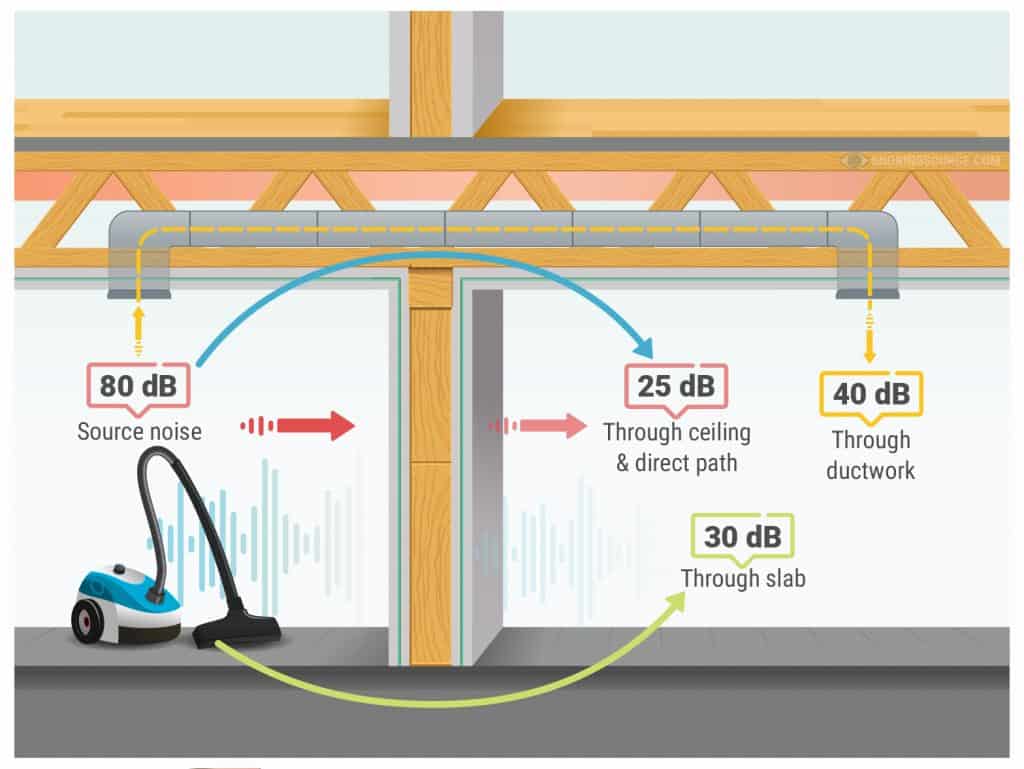
Airborne noise or sound is any noise that is transmitted by the air. In order for sound to be transmitted there needs to be a medium for propagation.
Air is the perfect medium because it's around you at all times. It's the same reason there is no sound in a vacuum, because there are no molecules to vibrate.
Examples include people talking, a vacuum cleaner, drums playing, birds chirping, etc.
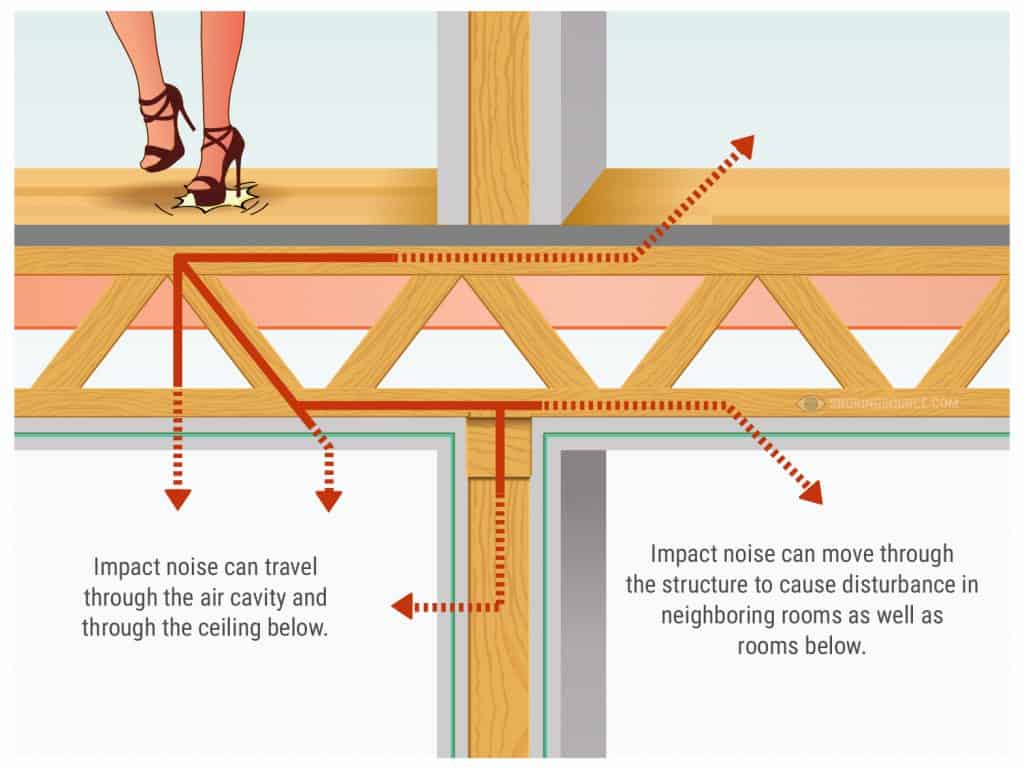
Structure borne noise or impact noise is any noise that is transmitted through a structure as a result of two objects colliding. Examples include footfalls, doors slamming, moving furniture, etc.
When an impact is generated on a rigid surface, any vibrational energy that isn't absorbed is transmitted to the structure, the connected elements, and even surrounding particles. Meaning that impact noise can result in attenuated airborne sound.
The level of transmission of impact noise is highly dependent on the material's characteristics (elasticity and density) and the velocity of the object.
Doors are one of the biggest transmitters of sound in a bedroom. Most doors are manufactured from relatively thin materials featuring air gaps; They are essentially soundboards. The Solution: Adding weight to the door and preventing air leaks.
The easiest way to add weight or density to a thin door is to simply replace it. However, heavier doors increase material costs and result in an expensive replacement. If you have the money then simply look for a solid thick slab-style door. You can expect to pay at least $200-300.
Keep in Mind: Soundproofing is an expensive process, even "cheap" soundproofing materials and DIY approaches to soundproofing make assumptions in regards to ownership of existing furniture and structures.
James Burkett
If you don't have the budget for a new door, you can add extra mass by affixing a layer of Mass Loaded Vinyl (MLV) or acoustical sound board to the room-side of the door.
An alternative is to hang a tapestry or a thick blanket to achieve a similar result.
In order to prevent the door air leaks you should start by:
To check for air leaks you can simply stand inside the room with the door closed and the lights off. If you see light shining through, you have an air leak that sound can travel through.
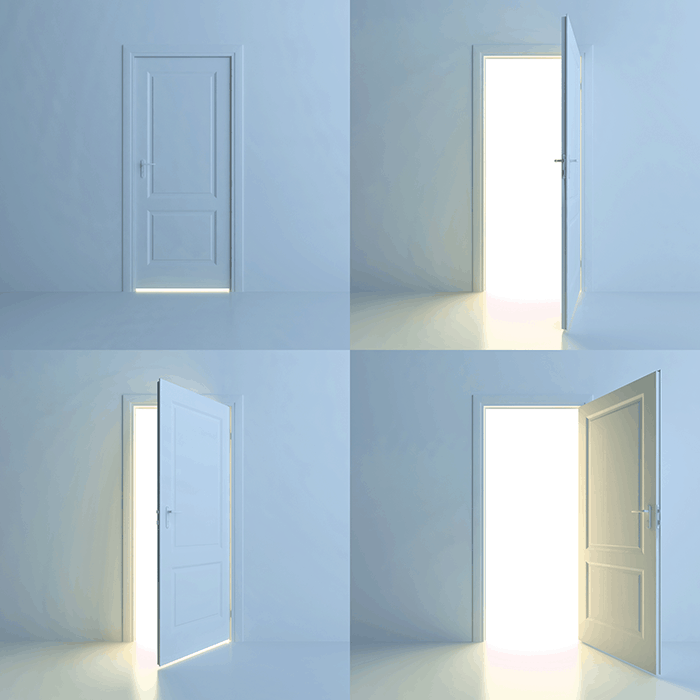
Not all bedrooms have windows. However, like doors the windows are one of the most important targets for soundproofing.
On one hand, they have all the same problems as your door. On the other, they face the outside world, meaning there’s a lot of extra noise to keep out.
The process for air sealing your windows is the same as your door: acoustical sealant and weatherstripping. Assuming you sealed your door, you should have both of these products on-hand.
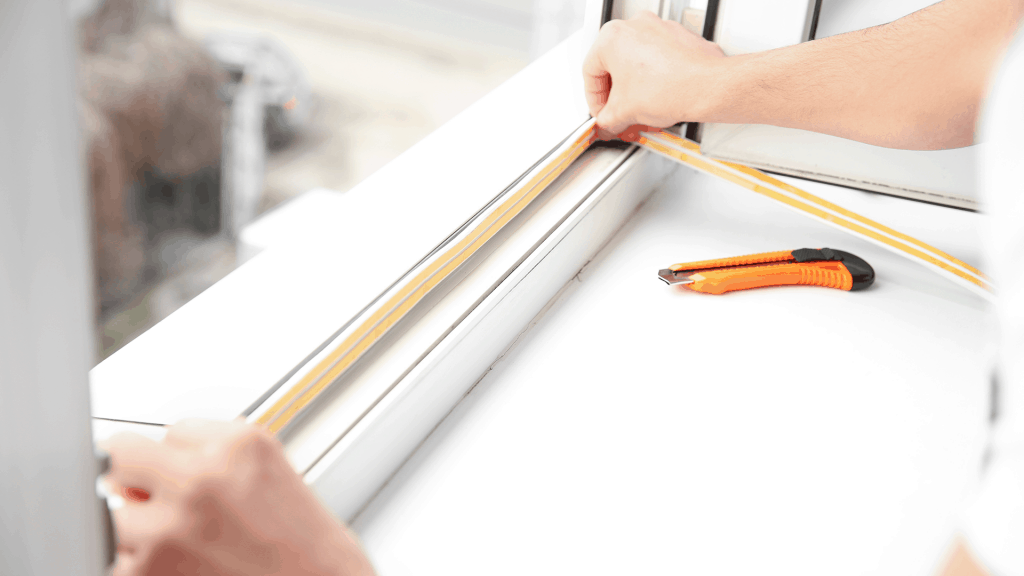
The next factor to consider are the glass panes. If you already have double or triple-pane thermal windows they are already fairly soundproof.
However, older houses have single-pane windows that don't seal very well. Just like your door, you could simply replace the windows. However replacing an entire window may not be very budget friendly.
Instead you could use a transparent window insert or consider creating a window plug for when you sleep. These inserts/plugs act as a barrier and create dead space between the window and the insert.
Soundproof curtains or drapes are inexpensive and easy to hang. In my experience, soundproof curtains work wonderfully for sound deadening but do not work well as a sound blocker.
Just like the door, you can think of the curtains as being MLV that helps to reduce sound. The more density you have between the room and the window, the less sound there will be. Rather than using two drapes, you could use four to increase the mass of the curtains.
To echo thoughts from Clayton's article on soundproofing curtains: Temper your expectations when it comes to the ability of fabric being able to attenuate airborne sound. Curtains marketed as "soundproof" aren't truly soundproof. Even his suggestion is to use a moving blanket with grommets.
James Burkett
Large tapestries or wall hangings can have a similar effect. However, the material is usually thin and the sound won't be dampened as effectively.
As we noted, soundproofing involves impact noises; Impact noise is a result of two objects colliding. The impact creates vibrations that resonate throughout the structure.
The best and easiest way to mitigate this noise is by installing wall-to-wall carpet with dense padding. Carpet works to silence footsteps and helps absorb airborne noise.
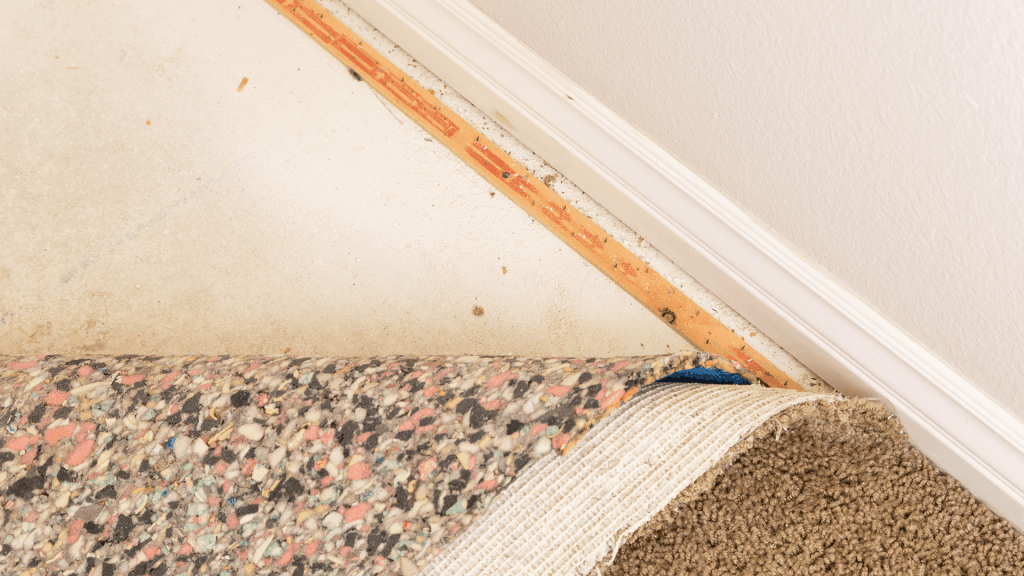
You can further soundproof your floors using a soundproof underlayment comprised of MLV bonded to closed cell foam.
While wall to wall carpeting and underlayment is the best option, it's also the most expensive; If you live in an apartment, it may not even be an option. At the very least, invest in area rugs and consider affixing a layer of MLV to the bottom of them.
Noise can reflect off hard surfaces like your walls and ceiling. Meaning bare walls will reflect and amplify sounds. Think of this like yelling into a canyon and listening to the echo.
The goal of soundproofing foam and acoustic panels is to absorb sound rather than blocking sound from getting in. Soft surfaces help to absorb sound and make your bedroom quieter.
While soundproofing foam is engineered for its purpose, not everyone wants to have their room look like a recording studio.
Another option is to cover your walls with tapestries, thick blankets, quilts, or moving pads as well as other forms of wall hangings.
When soundproofing walls, the first thing to take into consideration are air leaks. The most likely culprits are electrical outlets, HVAC vents, and gaps behind baseboards. Essentially, any gaps that leak air can also leak sound.
HVAC vents are responsible for heating, cooling, and circulating air in your bedroom. Sealing them permanently isn't an option but temporarily closing the vent and sealing it with a magnetic vent cover will work fine. You can also use a piece of MLV to further soundproof the vent.
Electrical outlets can be sealed with socket sealers and covered with soundproof switch covers. You can also use an acoustic sealant like Green Glue.
In order to seal baseboards you need to:
Unless you're specifically designing a room to be quiet, the question of soundproof materials doesn't really come up. As you might expect, it's much easier to soundproof walls during construction rather than after the fact.
Soundproofing material is evaluated by a metric known as Sound Transmission Class (STC). Essentially, an STC rating helps to quantify how much sound a wall or material might stop. STC shouldn't be solely relied on for quantifying real world soundproofing because it doesn't factor in lower frequency sounds (LFS) which cause vibrations between rooms.
As you might expect a combination of methods is best. As we've learned above the best ways to go about sound deadening is increasing mass and density, and using absorbent materials. If you're building walls with soundproofing in mind you can do the following:
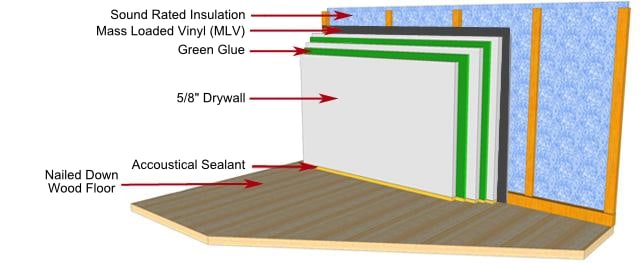
Bedrooms have the advantage of large pieces of furniture: desks, book cases, dressers, chairs/couches, end tables, etc. You can strategically position these pieces of furniture to help combat noise coming through shared walls.
This concept is similar to adding mass or density. You're adding an extra surface for soundwaves to vibrate. The larger/heavier something is, the harder it is to vibrate.
This method sort of assumes that you already have furniture to rearrange. If you don't own any bedroom furniture and your intention is soundproofing, invest in bookshelves and books. In terms of density, they're your best bet.
Note: While your bed is a large piece of furniture, you also sleep in it. Placing the bed and bed-frame on the incident wall will mean you'll be able to hear the sound even better. Instead, you should place your bed as far away from the source as possible.
Soundproofing your bedroom doesn't require a lot of money or expertise, and it could be your ticket to a restful night’s sleep. If you have insomnia, noisy housemates, or live in a busy part of town, a day or two taken to soundproof your bedroom could be time well spent.

Snoringsource.com is a participant in the Amazon Services LLC Associates Program, an affiliate advertising program designed to provide a means for website owners to earn advertising fees by advertising and linking to amazon(.com, .co.uk, .ca etc) and any other website that may be affiliated with Amazon Service LLC Associates Program.